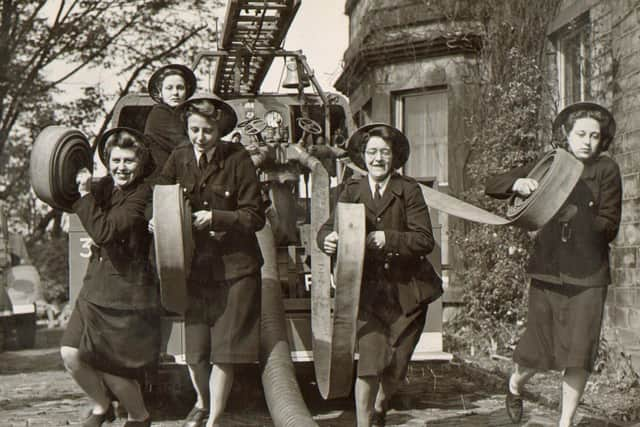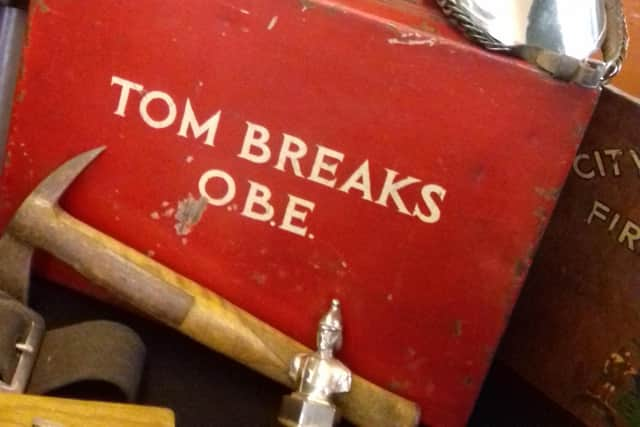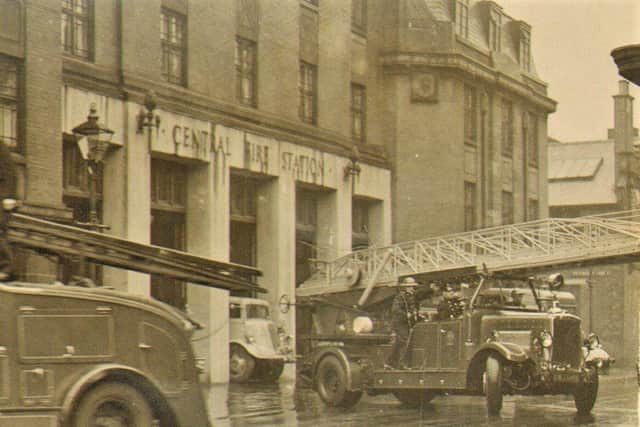The heroic Sheffield firefighter who inspired change
and live on Freeview channel 276
On the front line of the battle were the men and women of the Auxiliary Fire Service (AFS), later the National Fire Service (NFS).
From its inception in 1938 thousands of volunteers were recruited to the AFS to work alongside regular firefighters; an army of men and women who would be instrumental in the defence of Britain and its civilians.
Advertisement
Hide AdAdvertisement
Hide AdOne of the architects of the AFS was a Yorkshireman who, before taking on the task of organising the country’s wartime brigades, spent 14 years as the head of Sheffield’s fire service. In his time in the city, Superintendent Tom Breaks developed the brigade into one of the most efficient in the country, laid the foundations for what would become the National Emergency Services Museum (NESM).


Born in Bradford in 1890, Breaks had the fire service in his blood. He grew up in stations as the son of a chief and joined the Nottingham brigade aged 21.
When World War I intervened Breaks enlisted as a private but his skill as a firefighter soon came to the fore. In 1917 he received the Croix de Guerre and Palm for his efforts in tackling a fire caused by enemy aircraft and later was put in charge of a team of military firefighters.
Following the end of World War I Breaks returned to the fire service, serving as chief officer in Salford before arriving to take over as superintendent of the Sheffield brigade in 1923, aged 32. As chief, his courage and leadership became legendary.
Advertisement
Hide AdAdvertisement
Hide AdHe believed the best way to fight a fire was at close quarters which meant he regularly put himself at the heart of the danger. As one former firefighter who worked under Breaks, Bill Atkins, put it, ‘Tom Breaks never just ordered firemen into a blaze. He said ‘come with me’ and led them there.’


Atkins remembers attending a fire at a rubber works in Sheffield where Breaks was so close to the inferno molten rubber ‘almost swept across his boots’. On another occasion he donned a diving suit a descended 30 feet into a well in a – sadly unsuccessful – attempt to rescue three children.
Another former colleague remembered the night that Tom Breaks saved his life.
In 1929 firefighter George Greaves was tackling a major blaze in Sheffield when he fell through the roof and plummeted 40 feet to the basement, trapped under mounds of rubble. Breaks had been caught in the collapse too but, having fought his way free, went back into the building to reach the injured firefighter.
Advertisement
Hide AdAdvertisement
Hide AdAnd then there was the story of the tiger. In 1933 the animal was featuring in a show at the Sheffield Empire when it escaped into the theatre’s cellar. It had already badly mauled one man by the time the fire service arrived on the scene. Breaks disappeared into the cellar armed only with a fire hose, using the water to drive the frightened tiger down a makeshift tunnel and back into its cage.


It wasn’t just in the face of danger that Breaks showed his leadership and dedication to a service that had been badly impacted by World War I and the ensuing economic difficulties. He was instrumental in the opening of a new central station at Division Street, recognising the need to expand not just the service’s operational space but also to provide better accommodation for men and their families.
Concerned with the number of people who put themselves in greater danger at fires because they were scared to come down ladders or jump into nets, he also introduced open days at the station, teaching the importance of fire safety and how people could help themselves in the event of fire.
During his time in Sheffield Breaks attended nearly 10,000 fires and was awarded a host of medals including, on four occasions, the silver medal of the Society of the Protection of Life from Fire for personal gallantry.
Advertisement
Hide AdAdvertisement
Hide AdHe left the city in 1937, moving to the Home Office’s newly formed Fire Brigades Division as an inspector. His duties included assisting in the reorganisation of British fire services on a national scale, leading the move from locally organised units to a more co-ordinated, national approach.
Among the innovations Breaks helped to champion was the introduction of women into the AFS and NFS at a time when such a move was still highly controversial.
The move to the Home Office may have taken Breaks away from operational firefighting but it couldn’t take the firefighter out of Breaks. In 1940 he was awarded an OBE after taking charge of a huge fire at an oil dump in South Wales caused by German bombing. As well as directing the 18-day rescue effort, at times under fire, Breaks also organised billeting, feeding, and medical attention for those battling the blaze.
There is one more thing that Sheffield can thank Tom Breaks for. In 1931, recognising the importance of preserving the heritage of the service he loved, he began a small collection of historic objects at Sheffield’s Rockingham Street station that would lay the foundations for what became NESM.
Advertisement
Hide AdAdvertisement
Hide AdTom Breaks, and his remarkable contribution to the city, are still remembered at the museum.
NESM houses the former superintendent’s personal collection and keeps on permanent display numerous items from his time in Sheffield and beyond, including his impressive collection of medals.
On leaving Sheffield in 1937, Breaks said of the city’s fire brigade, "They have at all times stood by me and assisted me in times of stress, danger and discomfort.
"A fire brigade is not judged by its buildings, its machines, and apparatus, but by the quality of its men, and in Sheffield, we have the right men.
“Some of the happiest years of my life have been spent in Sheffield.”
To find out more about NESM visit www.visitnesm.org.uk